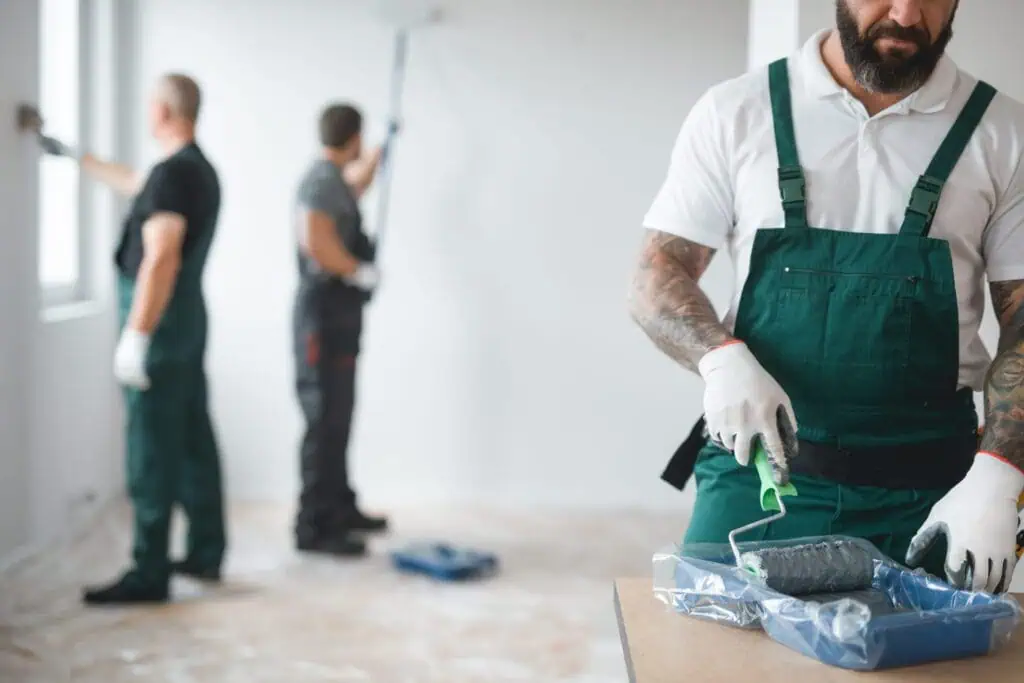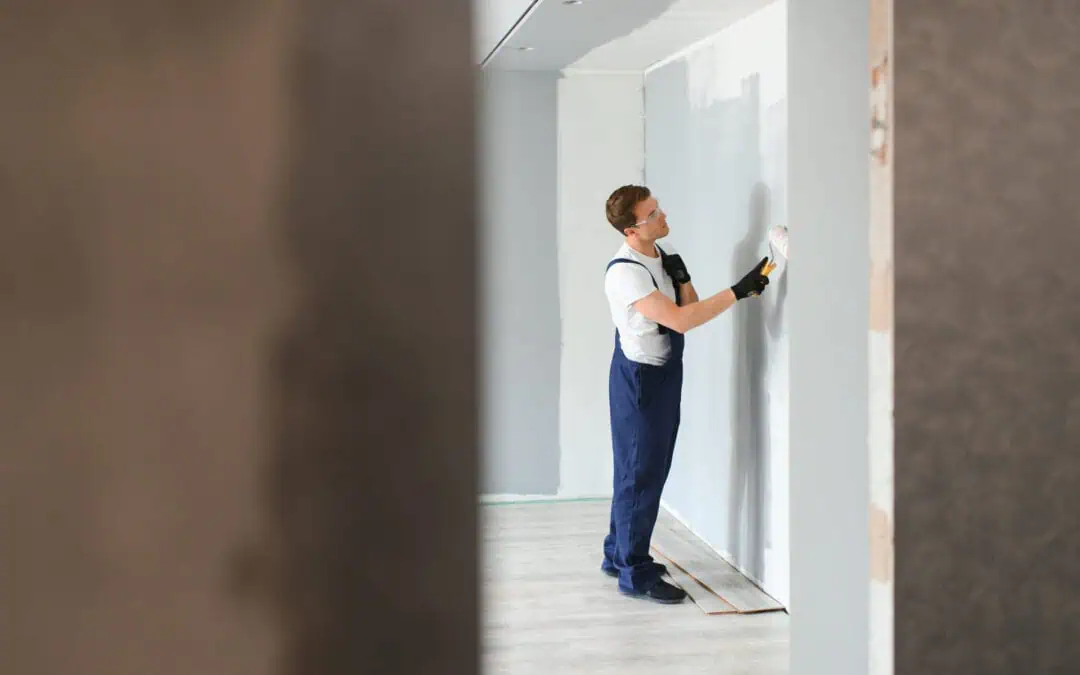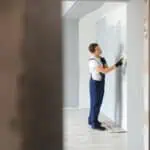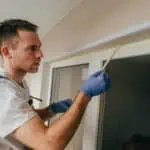Paint can refresh a room’s appearance, but it won’t fix what lies beneath the surface. Cracks, grime, excess moisture, and unstable finishes often go unnoticed—until they cause problems that shorten the lifespan of even high-quality paint. Residential painters know that preparation isn’t a suggestion; it’s a requirement. 7 paint issues residential painters address before starting a project involve fixing surface damage, improving paint adhesion, and managing the environment to ensure reliable results.
This walkthrough highlights why these problems matter and how trained professionals like those at Ponderosa Painting fix them early. As the team notes, “Painting is the final step, not the first. If the base isn’t ready, the finish won’t last.”
1. Uneven Walls Affect Paint Consistency
Walls that feel smooth to the touch may still show signs of wear. Subtle dings, uneven patches, and leftover joint compound from previous repairs become highly visible once fresh paint is applied. Residential painters inspect wall conditions with an eye for detail and precision.
They use advanced leveling tools, wide putty knives, and specialized sanding systems to even out imperfections. This type of prep helps paint settle evenly across the surface, minimizing light distortion and inconsistent textures.
-
Uneven spots reflect light differently, altering the perceived color
-
Visible ridges or dips interrupt the uniform look of most finishes
-
Correcting surface flaws improves coverage and reduces the need for reapplication
2. Moisture Damage Weakens Paint Layers
Water damage often hides in corners or behind baseboards. Swollen drywall, loose tape, or faint yellow staining often point to excess humidity or past leaks. Residential painters investigate these signs before moving forward with any coatings.
They rely on both manual inspection and digital moisture detection tools. After identifying the source, they either treat the area with mold-resistant products or recommend repairs. Applying paint over damp materials is never an option.
-
Untreated moisture leads to blistering, flaking, and mildew
-
Moisture-resistant primers are used in bathrooms, basements, and kitchens
-
EPA guidelines support sealing water-damaged surfaces before painting resumes
3. Flaking Paint Compromises New Coats
Old paint that chips, cracks, or powders won’t support a new application. These unstable layers create poor adhesion and can lift off with the fresh paint. Residential painters always evaluate the existing finish to determine whether removal is necessary.
They use putty knives, sanding blocks, or rotary tools to strip away weak sections. In many cases, they apply bonding primers to strengthen the base. This ensures the new coat locks into place and doesn’t fail prematurely.
-
Cracked coatings cause peeling in as little as one season
-
Bonding primers stabilize rough or porous surfaces
-
Removing loose material improves overall adhesion and surface durability
4. Contaminated Surfaces Block Paint Adhesion
Residue from oils, dust, and airborne particles affects how paint bonds to walls and trim. These contaminants are often invisible but highly disruptive. Residential painters treat cleaning as an essential prep step—not an afterthought.
They choose strong cleaners that break down grease and residue, then follow with rinsing and light sanding. This dual-action process ensures the surface is paint-ready, especially in high-contact areas like kitchens and hallways.
-
Dust and oils prevent full paint adhesion, leading to streaking or bubbling
-
TSP-based solutions break through smoke, cooking residue, and buildup
-
Sanding after washing boosts texture and grip on glossy finishes

5. Incompatible Paints Create Adhesion Problems
Not all paints layer well together. Water-based paint applied directly over oil-based paint can separate and peel quickly. Most homeowners can’t tell the difference on sight, but residential painters test for compatibility before making a plan.
They apply small alcohol tests or scrape tests to identify the existing paint type. Based on the results, they either sand the surface or apply a transition primer. This creates a stable foundation for the next coat, regardless of its formula.
-
Mismatched coatings cause delamination and surface cracks
-
Oil-based paints were commonly used in homes built before the 1990s
-
Transition primers help modern paints adhere to older finishes
6. Trim Gaps Disrupt Paint Lines
Wood trim doesn’t stay perfectly aligned. Over time, small openings appear where baseboards meet walls or where two pieces of trim connect. These gaps can cause paint to settle unevenly and break apart once dry.
Residential painters fill those spaces using premium, paintable caulk that remains flexible. They then tool the surface carefully to make it blend seamlessly into the surrounding trim. This step gives the final paint job a cleaner, more polished look.
-
Gaps attract dirt and cause jagged edges under fresh paint
-
Caulking before painting keeps seams from cracking or shifting
-
Flexible sealants adapt to seasonal wood movement
7. Indoor Climate Conditions Alter Drying Time
Paint doesn’t cure properly in extreme conditions. High humidity, poor airflow, or fluctuating temperatures can all change how paint dries. Residential painters measure these conditions before deciding when—and how—to start painting.
They adjust by using fans, dehumidifiers, or heaters to stabilize the room. That ensures the paint levels out correctly and hardens without issues. Ignoring environmental conditions can lead to tacky surfaces or uneven gloss.
-
Ideal interior painting conditions fall between 60°F–80°F with under 60% humidity
-
Fast drying due to heat can cause visible lap marks
-
Prolonged tackiness often leads to dust sticking to the paint surface

Why Surface Prep Determines Paint Success
No matter how well paint is applied, it won’t hold up if the surface underneath isn’t ready. Lasting finishes rely on prep work that eliminates hidden damage, cleans thoroughly, and corrects instability. Residential painters manage these challenges methodically to prevent bigger problems down the line.
Ponderosa Painting emphasizes that their crews treat every surface like a puzzle—each part must fit before the final image looks right. That attention during early stages makes a difference not just in appearance, but in how long the finish performs.
Key Takeaways on Paint Problems Residential Painters Solve First
-
Flawless surfaces help prevent shadowing, patchiness, and roller marks
-
Moisture must be identified and corrected before applying any coating
-
Loose or chalky paint must be removed to ensure new layers adhere
-
Cleaning and sanding remove substances that weaken paint bonding
-
Interior climate control supports consistent drying and finish quality
Frequently Asked Questions
Why do professional painters spend so much time prepping?
Because paint won’t bond correctly to damaged or dirty surfaces. Prep work ensures the final coat lasts and looks clean.
How do painters detect hidden moisture?
They use moisture meters and visual clues like staining, warping, or soft drywall to locate and assess water issues.
Can I paint over cracked or flaking paint?
Only if it’s minor and properly treated. Otherwise, unstable paint must be scraped and primed to avoid future peeling.
Is caulking trim really necessary before painting?
Yes. Gaps left between trim and walls lead to unsightly lines and cracking, especially as wood expands and contracts.
Does room humidity matter during painting?
Absolutely. High humidity prevents paint from curing properly, which leads to smearing, bubbling, or dirt getting stuck.
Louisiana News Post provides expert advice on home and garden services like gardening, landscaping, hardscaping, renovating, remodeling, roofing, HVAC, and interior design to help readers create their dream spaces. Their practical tips and creative solutions are inspired by years of hands-on experience and a commitment to affordable living. Whether you’re a seasoned handyman or just starting to explore home improvement, Louisiana News Post’s articles are a reliable resource for innovative ideas and detailed guidance.








